HarmonyOS Next 关于页面渲染的性能优化方案
HarmonyOS Next 关于页面渲染的性能优化方案
HarmonyOS Next 应用开发中,用户的使用体验至关重要。其中用户启动APP到呈现页面主要包含三个步骤:
- 框架初始化
- 页面加载
- 布局渲染
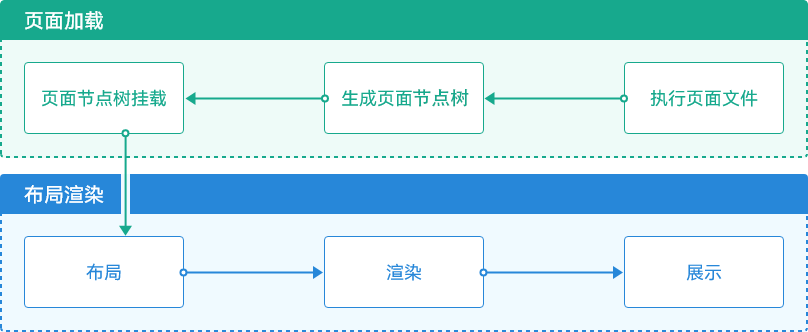
从页面加载到布局渲染中,主要包含了6个环节:
- 执行页面文件
- 生成页面节点树
- 页面节点树挂载
- 布局
- 渲染
- 展示
页面节点树挂载的速度取决于节点的数量,我们可以理解给1个自定义组件在渲染时,后端同时会生成一个对应的
节点。该节点后期会用来diff。
渲染的速度取决于布局属性。如果布局属性越复杂、冗余。那么就越慢。
节点的数量优化
HarmonyOS Next 会根据自定义节点的数量在后端生成对应的节点。那么如果我们在实际开发中,可以考虑尽量的将自定义组件的数量减少,替换成 @Builder 自定义构建函数。
那么哪些自定义节点可以替换成**@Builder**自定义构建函数呢,看下表:
| 分类 | 自定义组件 | @Builder |
|---|---|---|
| 复用布局结构 | 支持 | 支持 |
| 复用样式 | 支持 | 支持 |
| 导出使用 | 支持 | 不支持 |
| 生命周期 | 支持 | 不支持 |
| 状态管理 | 支持 | 不支持 |
所以,当我们对于封装的需求,不需要导出使用、不需要使用生命周期、不需要独立的状态管理时。就可以使用**@Builder**来代替自定义组件。
@Builder的基本使用
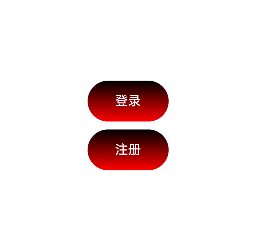
@Entry
@Component
struct Index {
@Builder
CustomBtn(text:string){
Button(text)
.width(100)
.height(50)
.linearGradient({
colors:[[Color.Black,0],[Color.Red,1]]
})
}
build() {
Column({space:10}){
this.CustomBtn("登录")
this.CustomBtn("注册")
}
.width("100%")
.height("100%")
.justifyContent(FlexAlign.Center)
}
}
自定义组件的基本使用

@Component
struct CustomBtn {
text: string = ""
build() {
Button(this.text)
.width(100)
.height(50)
.linearGradient({
colors: [[Color.Black, 0], [Color.Red, 1]]
})
}
}
@Entry
@Component
struct Index {
build() {
Column({ space: 10 }) {
CustomBtn({text:"登录"})
CustomBtn({text:"注册"})
}
.width("100%")
.height("100%")
.justifyContent(FlexAlign.Center)
}
}
布局属性的优化
这里的优化,主要是指性能的优化,也就是用户体验的优化,不是对于开发者来讲的开发体验的优化。
HarmonyOS Next 有提供 @Styles 和 @Extends 来实现代码层面的优化,也就是样式代码的简单封装。
但是无论是用户层面的优化和代码层面的优化。@Styles 和 @Extends 都存在一定的限制。因此HarmonyOS
Next 又推出了 AttributeModifier 和 AttributeUpdater(AttributeUpdater 是AttributeModifier的继承 )
AttributeModifier
- AttributeModifier是一个接口,需要我们主动实现它相关的方法。如默认态(Normal)、按压态(Pressed)、焦点态(Focused)、禁用态(Disabled)、选择态(Selected)
- AttributeModifier 可以实现样式属性的按需注册
- 支持和@Observed和@ObjectLink配套使用
AttributeModifier 基本使用
-
定义MyButtonModifier类,继承AttributeModifier接口,并且声明是对Button进行的样式属性封装
export class MyButtonModifier implements AttributeModifier<ButtonAttribute> { -
MyButtonModifier中声明变量,用来注册不同的样式属性
isDark: boolean = false -
定义正常态的样式 (applyNormalAttribute 是接口AttributeModifier中定义的 )
applyNormalAttribute(instance: ButtonAttribute): void { if (this.isDark) { instance.backgroundColor(Color.Black) .fontColor(Color.White) .border({ width:10, color:Color.Brown }) .borderRadius(20) .padding(10) .margin(20) } else { instance.backgroundColor(Color.White) .fontColor(Color.Black) } }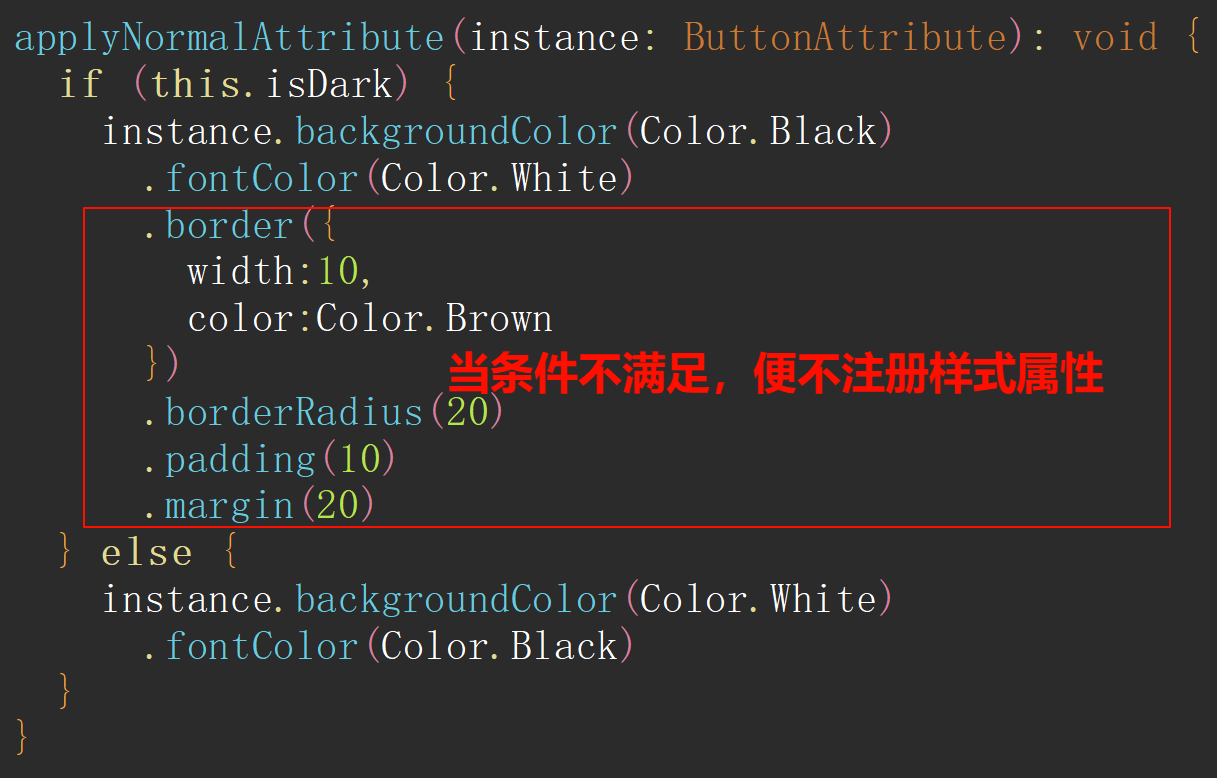
-
组件中开始复用(完整代码)
export class MyButtonModifier implements AttributeModifier<ButtonAttribute> { isDark: boolean = false constructor(dark?: boolean) { this.isDark = !!dark } applyNormalAttribute(instance: ButtonAttribute): void { if (this.isDark) { instance.backgroundColor(Color.Black) .fontColor(Color.White) .border({ width:10, color:Color.Brown }) .borderRadius(20) .padding(10) .margin(20) } else { instance.backgroundColor(Color.White) .fontColor(Color.Black) } } } @Entry @Component struct attributeDemo { @State modifier: MyButtonModifier = new MyButtonModifier(false); build() { Row() { Column() { Button("Button") // 注册属性 .attributeModifier(this.modifier) .onClick(() => { // 点击切换 this.modifier.isDark = !this.modifier.isDark }) } .width('100%') } .height('100%') } } -
效果
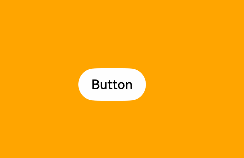
AttributeModifier 其他状态
多态样式中除了默认态(Normal)还有 、按压态(Pressed)、焦点态(Focused)、禁用态(Disabled)、选择态(Selected)。我们一并实现。
// 按压
applyPressedAttribute(instance: ButtonAttribute): void {
instance
.backgroundColor(Color.Red)
}
// 获得焦点
applyFocusedAttribute(instance: ButtonAttribute): void {
}
// 选择
applySelectedAttribute(instance: ButtonAttribute): void {
}
// 禁用
applyDisabledAttribute(instance: ButtonAttribute): void {
}
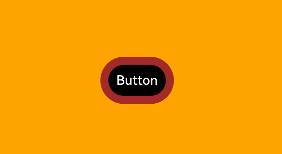
搭配 @Observed和@ObjectLink
上述案例中,样式的变更是根据 变量 isDark来实现的。如果想要根据对象中某个属性来实现样式的变更。我们可以搭配@Observed和@ObjectLink
对象嵌套对象
以下代码主要利用了 @Observed和@ObjectLink 可以监听深层次属性的改变,然后当深层次属性改变后,触发
AttributeModifier 跟随改变。
-
声明子类 Son,代表深层次属性的载体
@Observed class Son { // 控制样式切换的关键变量 isShow: boolean = false } -
使用 @Observed 修饰 Person类 (父类),拥有Son子类
@Observed class Person { son: Son = new Son() } -
声明 BtnModifier 类,需要实现 AttributeModifier 接口,实现样式优化和复用。接收 son属性。用来响应状态变化
class BtnModifier implements AttributeModifier<ButtonAttribute> { son: Son constructor(son: Son) { this.son = son } applyNormalAttribute(instance: ButtonAttribute): void { if (this.son.isShow) { instance.backgroundColor(Color.Red) } else { instance.backgroundColor(Color.Green) } } } -
完整代码
import { promptAction } from '@kit.ArkUI'; // 定义一个名为 'BtnModifier' 的类,实现对 'ButtonAttribute' 的属性修改 class BtnModifier implements AttributeModifier<ButtonAttribute> { // 存储一个 'Son' 类型的实例 son: Son; // 构造函数,接收一个 'Son' 类型的参数并初始化 'son' 属性 constructor(son: Son) { this.son = son; } // 应用普通属性的方法,接收一个 'ButtonAttribute' 类型的实例作为参数 applyNormalAttribute(instance: ButtonAttribute): void { // 如果 'son' 的 'isShow' 属性为 true,则将按钮背景颜色设置为红色 if (this.son.isShow) { instance.backgroundColor(Color.Red); } else { // 否则将按钮背景颜色设置为绿色 instance.backgroundColor(Color.Green); } } } // 使用 '@Observed' 装饰器标记的类,表示该类的变化可以被观测到 @Observed class Son { // 定义一个布尔类型的属性 'isShow',初始值为 false isShow: boolean = false; } // 使用 '@Observed' 装饰器标记的类,表示该类的变化可以被观测到 @Observed class Person { // 创建一个 'Son' 类型的实例并初始化 son: Son = new Son(); } @Component struct CustomBtn { // 使用 '@ObjectLink' 装饰器标记的属性,表示与外部对象的链接 @ObjectLink son: Son; // 可空的 'BtnModifier' 类型属性 modify: BtnModifier | null = null; // 在组件即将出现时执行的方法 aboutToAppear(): void { // 创建一个新的 'BtnModifier' 实例并赋值给 'modify' 属性 this.modify = new BtnModifier(this.son); } // 构建组件的方法 build() { // 创建一个按钮,并将按钮的文本设置为 'son.isShow' 的字符串表示形式 Button(this.son.isShow.toString())// 设置按钮的属性修改器为 'modify' .attributeModifier(this.modify); } } @Entry @Component struct Index { // 使用 '@State' 装饰器标记的属性,表示该属性的变化会触发组件的重新渲染 @State person: Person = new Person(); build() { // 创建一个列容器 Column() { // 创建一个自定义按钮组件,并传入 'person.son' 作为参数 CustomBtn({ son: this.person.son })// 为按钮添加点击事件处理函数 .onClick(() => { // 切换 'person.son.isShow' 的值 this.person.son.isShow = !this.person.son.isShow; // 显示一个提示信息 promptAction.showToast({ message: `${this.person.son.isShow}` }); }); } .width("100%") .height("100%") .justifyContent(FlexAlign.Center); } }

数组嵌套对象
数组嵌套对象的写法类似上面示例,但是可以通过简单的一些编程技巧来进一步优化。如单例
// 定义一个名为 'BtnModifier' 的类,实现对 'ButtonAttribute' 的属性修改
class BtnModifier implements AttributeModifier<ButtonAttribute> {
// 静态变量,用于存储单例实例
static instance: BtnModifier;
// 表示是否在交谈的布尔属性,初始值为 false
isTalk: boolean = false;
// 静态方法,用于获取单例实例
static getInstance(): BtnModifier {
// 如果单例实例不存在,则创建一个新的实例
if (!BtnModifier.instance) {
BtnModifier.instance = new BtnModifier();
}
// 返回单例实例
return BtnModifier.instance;
}
// 设置 isTalk 属性的方法
setTalk(isTalk: boolean): BtnModifier {
// 更新 isTalk 属性值
this.isTalk = isTalk;
// 返回当前实例,以便进行链式调用
return this;
}
// 应用普通属性的方法,接收一个 'ButtonAttribute' 类型的实例作为参数
applyNormalAttribute(instance: ButtonAttribute): void {
// 如果 isTalk 为 true,则将按钮背景颜色设置为红色
if (this.isTalk) {
instance.backgroundColor(Color.Red);
} else {
// 否则将按钮背景颜色设置为绿色
instance.backgroundColor(Color.Green);
}
}
}
// 使用 '@Observed' 装饰器标记的类,表示该类的变化可以被观测到
@Observed
class Person {
// 用户名属性,初始值为 "人类"
userName: string = "人类";
// 表示是否在交谈的布尔属性,初始值为 false
isTalk: boolean = false;
}
@Component
struct CustomBtn {
// 使用 '@ObjectLink' 装饰器标记的属性,表示与外部对象的链接
@ObjectLink
person: Person;
// 存储 'BtnModifier' 的实例,通过单例模式获取
modify: BtnModifier = BtnModifier.getInstance();
// 构建组件的方法
build() {
// 创建一个按钮,并将按钮的文本设置为 'person.userName'
Button(this.person.userName)// 设置按钮的属性修改器,并根据 'person.isTalk' 的值设置是否在交谈状态
.attributeModifier(this.modify.setTalk(this.person.isTalk));
}
}
@Entry
@Component
struct Index {
// 使用 '@State' 装饰器标记的属性,表示该属性的变化会触发组件的重新渲染
@State
personList: Person[] = [new Person(), new Person()];
// 构建组件的方法
build() {
// 创建一个列容器
Column() {
// 遍历 'personList',为每个 'Person' 实例创建一个 'CustomBtn' 组件,并添加点击事件处理函数
ForEach(this.personList, (person: Person) => {
CustomBtn({ person: person })
.onClick(() => {
// 切换 'person.isTalk' 的值
person.isTalk = !person.isTalk;
});
});
}
.width("100%")
.height("100%")
.justifyContent(FlexAlign.Center);
}
}
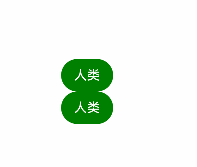
AttributeModifier 和 @Styles 、@Extend的比较
| 能力 | @Styles | @Extend | AttributeModifier |
|---|---|---|---|
| 跨文件导出 | 不支持 | 不支持 | 支持 |
| 通用属性设置 | 支持 | 支持 | 支持 |
| 通用事件设置 | 支持 | 支持 | 部分支持 |
| 组件特有属性设置 | 不支持 | 支持 | 部分支持 |
| 组件特有事件设置 | 不支持 | 支持 | 部分支持 |
| 参数传递 | 不支持 | 支持 | 支持 |
| 多态样式 | 支持 | 不支持 | 支持 |
| 业务逻辑 | 不支持 | 不支持 | 支持 |
基于以上对比,可以看见 AttributeModifier 几乎可以满足以上所有场景。唯一缺点就是代码量稍多一些些。
接口定义
declare interface AttributeModifier<T> {
applyNormalAttribute?(instance: T): void;
applyPressedAttribute?(instance: T): void;
applyFocusedAttribute?(instance: T): void;
applyDisabledAttribute?(instance: T): void;
applySelectedAttribute?(instance: T): void;
}
AttributeUpdater
如果设计大量的样式属性修改,如果都是基于状态变量,那么在实现修改前,还是会导致diff的对比,性能损耗验证。因此引入了 AttributeUpdater,它继承了AttributeModifier基本能力,还拓展了直接修改属性和组件构造函数的能力。用来根据单一状态来批量修改样式属性。
简单实用
- 声明 MyButtonUpdater 类,继承 AttributeUpdater
- 组件中实例化 MyButtonUpdater 类
- 直接修改组件样式属性
import { AttributeUpdater } from '@kit.ArkUI';
// 注意,这里是继承 AttributeUpdater 类
class MyButtonUpdater extends AttributeUpdater<ButtonAttribute> {
}
@Entry
@Component
struct attributeDemo {
@State modifier: MyButtonUpdater = new MyButtonUpdater();
build() {
Row() {
Column() {
Button("直接修改批量样式属性")
.attributeModifier(this.modifier)
.onClick(() => {
// 直接修改
this.modifier.attribute?.backgroundColor(Color.Green).width(200).fontColor(Color.Red)
})
}
.width('100%')
}
.height('100%')
}
}
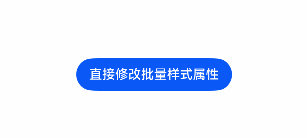
重新调用组件构造函数
提供了updateConstructorParams 接口,可以让我们重新调用该组件的构造函数。实现组件的重新渲染
-
继承 AttributeUpdater 类时,同时传入两个泛型 ButtonAttribute 和 ButtonInterface
class MyButtonUpdater extends AttributeUpdater<ButtonAttribute,ButtonInterface> { } -
直接调用要组件的构造函数 updateConstructorParams
import { AttributeUpdater } from '@kit.ArkUI'; // 注意,这里是继承 AttributeUpdater 类 class MyButtonUpdater extends AttributeUpdater<ButtonAttribute,ButtonInterface> { } @Entry @Component struct attributeDemo { @State modifier: MyButtonUpdater = new MyButtonUpdater(); build() { Row() { Column() { Button("重新渲染组件") .attributeModifier(this.modifier) .onClick(() => { this.modifier.updateConstructorParams("文本也可以改变") }) } .width('100%') } .height('100%') } }

接口定义
export declare class AttributeUpdater<T, C = Initializer<T>> implements AttributeModifier<T> {
applyNormalAttribute?(instance: T): void;
initializeModifier(instance: T): void;
get attribute(): T | undefined;
updateConstructorParams: C;
}
总结
后期如果要考虑实现样式复用,可以优先使用 AttributeModifier 和 AttributeUpdater
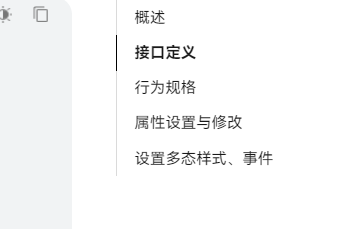
作者
作者:万少
链接:https://www.nutpi.net/
來源:坚果派 著作权归作者所有。
商业转载请联系作者获得授权,非商业转载请注明出处。
